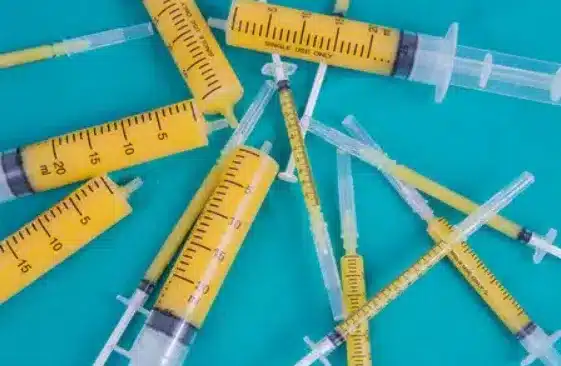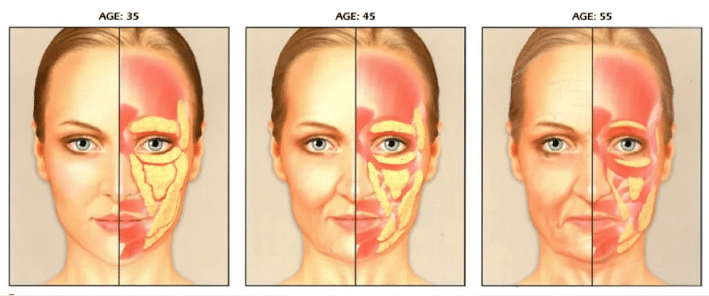Facial fat transfer surgery, also known as fat grafting or fat injection, is a cosmetic procedure that aims to restore volume, enhance facial contours, and rejuvenate the overall appearance of the face. This innovative technique involves transferring a patient’s own fat from one part of their body to another, typically from areas with excess fat, such as the abdomen, thighs, or buttocks, to areas that lack volume or have experienced age-related volume loss in the face.
Different Types of Facial Fat Transfer
Facial fat transfer can be performed using different techniques, each with its own advantages and considerations. The three main types of facial fat transfer are:
- Micro-Lippo Injection: This technique involves using a small cannula to extract fat from a donor site. The harvested fat is then refined and injected into specific areas of the face, allowing for precise contouring and volumizing.
- Nano-Fat Injection: Nano-fat injection involves the transfer of extremely small fat particles, which are rich in regenerative cells and growth factors. This technique is particularly effective for improving skin quality, reducing fine lines, and enhancing overall facial rejuvenation.
- Combination Approach: In some cases, a combination of micro-lipo and nano-fat injections may be used to achieve optimal results. This approach allows for both volumizing and rejuvenating effects, addressing multiple concerns simultaneously.
5 Tips for Facial Fat Transfer Surgery
If you are considering facial fat transfer surgery, here are five important tips to keep in mind:
- Consultation and Planning: Schedule a consultation with a board-certified plastic surgeon who specializes in facial fat transfer. During this consultation, discuss your goals, expectations, and any concerns you may have. The surgeon will assess your suitability for the procedure and create a personalized treatment plan.
- Choosing a Qualified Surgeon: It is crucial to select a highly skilled and experienced surgeon who has a proven track record in performing facial fat transfer surgeries. Research their credentials, view before-and-after photos of previous patients and read reviews to ensure you are making an informed decision.
- Understanding the Recovery Process: Familiarize yourself with the recovery process before undergoing surgery. Follow your surgeon’s post-operative instructions carefully, including any recommended medications, dressings, or activity restrictions. This will help ensure a smooth recovery and optimize your results.
- Realistic Expectations: While facial fat transfer can provide remarkable improvements, it is important to have realistic expectations. Understand that results may vary based on individual factors such as age, skin quality, and the amount of fat available for transfer. Your surgeon will discuss the anticipated outcomes during your consultation.
- Long-Term Maintenance: Maintain a healthy lifestyle after surgery to maximize the longevity of your results. Protect your skin from excessive sun exposure, follow a nutritious diet, and avoid smoking or excessive alcohol consumption. Regularly consult with your surgeon for follow-up appointments to monitor your progress and address any concerns.
Compared to more invasive surgical procedures, facial fat transfer typically requires minimal downtime.
Benefits of Facial Fat Transfer
Facial fat transfer offers several benefits, including:
- Natural and Long-Lasting Results: Since the procedure utilizes your body’s fat, the results are typically more natural-looking and tend to last longer than synthetic fillers.
- Improved Facial Volume: Facial fat transfer restores volume to areas that have lost fullness over time, such as the cheeks and temples, creating a more youthful appearance.
- Enhanced Facial Contours: The procedure can help contour the face, defining the cheekbones, jawline, and chin for a more balanced and aesthetically pleasing look.
- Reduced Wrinkles and Fine Lines: Fat injections can diminish the appearance of wrinkles, fine lines, and creases, providing a smoother and more rejuvenated complexion.
- Lip Augmentation: Facial fat transfer can enhance the volume and shape of the lips, achieving a fuller and more youthful pout.
- Under-Eye Rejuvenation: The procedure can address under-eye hollows or dark circles, creating a fresher and more rested appearance.
- Scar Revision: Fat transfer can improve the appearance of certain scars, such as acne scars or surgical scars, by filling in the depressions and creating a smoother skin texture.
- Minimal Downtime: Compared to more invasive surgical procedures, facial fat transfer typically requires minimal downtime and discomfort, allowing patients to resume their normal activities relatively quickly.
- Customizable and Precise Results: The surgeon can meticulously sculpt and shape the transferred fat to achieve the desired outcome, providing tailored results that suit each patient’s unique facial structure.
- Lower Risk of Allergic Reactions: As the procedure uses the patient’s own fat, there is a reduced risk of allergic reactions or rejection compared to synthetic fillers.
The results of a facial fat grafting procedure will not be immediately noticeable following the treatment but will evolve over 3-4 months as the swelling subsides. Dr Diana Pinsky
Side Effects of Facial Fat Transfer
While facial fat transfer is generally considered safe, it is important to be aware of potential side effects, which may include:
- Swelling and Bruising: Swelling and bruising are common after the procedure but should subside within a few days to a week.
- Discomfort or Pain: Some discomfort or pain may be experienced at the donor and recipient sites, which can be managed with pain medication prescribed by your surgeon.
Fat grafting, another term for facial fat transfer, allows for precise sculpting and contouring of the face
Eligibility for Facial Fat Transfer
Facial fat transfer is suitable for individuals who desire facial rejuvenation, improved volume, or enhanced contours. However, it is important to note that not everyone is an ideal candidate for the procedure. Factors that may affect eligibility include:
- Overall health: It is important to be in good general health and have realistic expectations for the procedure.
- Sufficient donor fat: Adequate fat reserves in other areas of the body, such as the abdomen or thighs, are necessary for the transfer.
- Non-smoking: Smoking can impair the healing process and increase the risk of complications, so it is advisable to quit smoking before and after the procedure.
- Skin elasticity: The quality and elasticity of the skin play a role in determining the outcome of the procedure. Your surgeon will assess this during the consultation.
Your surgeon will conduct a comprehensive evaluation to determine your eligibility and create a personalized treatment plan.

Step-by-Step Process of Facial Fat Transfer
Facial fat transfer, also known as fat grafting, involves several key steps to harvest fat from one part of the body and inject it into the face to restore volume and rejuvenate facial contours. Here’s a detailed guide to the procedure:
Consultation and Assessment
Patient Evaluation
The plastic surgeon assesses the patient’s facial anatomy, concerns, and goals for rejuvenation.
Discussion of Options
The surgeon explains the benefits, risks, and expected outcomes of facial fat transfer versus other treatment options.
Pre-operative Preparation
Medical Evaluation
The patient undergoes a comprehensive medical assessment to ensure suitability for surgery.
Pre-operative Instructions
Specific guidelines are provided regarding medication, smoking cessation, and skincare routines before the procedure.
Fat Harvesting (Liposuction)
- Anesthesia: Local anesthesia is administered to the donor site (e.g., abdomen, thighs) for liposuction.
- Fat Extraction: The surgeon performs liposuction to harvest excess fat from the donor area using a thin cannula (tube) inserted through small incisions.
- Fat Processing: The collected fat is processed to purify and isolate viable fat cells for injection into the face.
Facial Injection
- Anesthesia: Local anesthesia or nerve blocks are administered to numb the facial areas to be treated.
- Fat Injection: Using specialized techniques, the surgeon strategically injects the processed fat into targeted areas of the face, such as cheeks, temples, lips, or jawline.
- Layered Approach: Fat is injected in small amounts and distributed evenly to achieve smooth, natural-looking results.
Post-operative Care
- Monitoring: The patient is monitored closely for any immediate post-operative complications.
- Recovery Instructions: Detailed instructions are provided for post-operative care, including activity restrictions, pain management, and skincare.
- Follow-up Appointments: Scheduled follow-up visits allow the surgeon to assess healing progress and address any concerns.
Recovery and Results
- Initial Recovery: Patients may experience mild swelling, bruising, and discomfort at the donor and recipient sites, which gradually subsides over several days to weeks.
- Long-Term Results: Some of the transferred fat may be reabsorbed initially, but the surviving fat cells establish blood supply and integrate into the facial tissues, providing long-lasting volume enhancement.
- Final Outcome: The full results of facial fat transfer become apparent as swelling resolves, revealing improved facial contour and rejuvenated appearance.
Maintenance and Follow-up
- Follow-up Visits: Patients return for follow-up appointments to monitor progress and discuss additional treatments or touch-ups if needed.
- Long-Term Care: Maintaining a healthy lifestyle, including skincare and sun protection, helps preserve the results of facial fat transfer over time.
Facial fat transfer is a versatile procedure that can address various signs of aging and volume loss in the face using the body’s natural tissues. Consulting with a qualified plastic surgeon is essential to determine candidacy and develop a personalized treatment plan tailored to individual needs and goals.
Summary
Facial fat transfer surgery is a versatile and effective procedure for enhancing natural beauty, restoring volume, and rejuvenating the face. By utilizing the patient’s own fat, this technique offers long-lasting results and a reduced risk of allergic reactions. With the ability to address various concerns, facial fat transfer provides individuals with tailored, natural-looking outcomes. It is essential to consult with a qualified plastic surgeon to determine eligibility and receive personalized advice for the best possible results.
FAQs
1. Is facial fat transfer permanent?
Results are long-lasting, but some fat may be reabsorbed over time.
2. Are there non-surgical alternatives?
Yes, dermal fillers offer temporary results without surgery.
3. How long is the recovery time?
Most people recover within a week, but swelling may persist.
4. How is facial fat transfer performed?
The procedure involves harvesting fat from donor sites through liposuction, purifying the fat, and then carefully injecting it into targeted areas of the face using specialized techniques to achieve desired contouring and volume enhancement.
5. Is facial fat transfer permanent?
Some of the transferred fat cells may be absorbed by the body initially, but the remaining cells typically establish a long-term presence in the face. Results can be long-lasting, although touch-up treatments may be needed over time.
www.drdianaponsky.com





